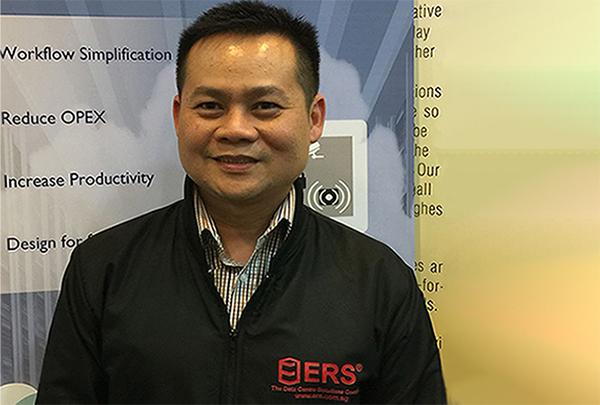Tapping on open innovation to add value to data centres
ERS has been providing solutions to data centres for more than two decades. Its CEO, CK Cheong, tells us how open innovation has helped his company stay competitive.
Although the hype surrounding digitisation often revolves around software applications, the hardware aspects of managing digital data are equally important. With proper organisation of servers and cables, data centres can improve their efficiency, lower their energy consumption and reduce their downtime, which translate to significant productivity gains.
ERS, a Singapore-based small and medium enterprise (SME) established in 1995, has transformed itself from being a specialist in server racking systems for data centres to being a data centre solutions company. Its E@Rack is developed using engineering know-how and aided by the scientific method of computational fluid dynamics (CFD) analysis. This empowers the product with superior heat dissipation properties that result in energy cost savings of up to 25 percent when high density requirement is needed by data centres. The aluminium-extrusion skeletal frame also makes it stronger to withstand a maximum load capacity of 1,500kg as compared to convention server racks.
We spoke to CK Cheong, CEO of ERS, about how ERS continues to edge out the competition with such products after more than two decades in the business.
Q. How has ERS sustained its competitiveness since 1995?
A. Having recognised that our business needs to step out of a ‘local SME on survivor mode’ mentality, we began by identifying who our real end-user customers were—data centres. Only thereafter were we able to further understand the kind of business and technical challenges our end-users had to overcome.
We then researched on how to go about resolving these problems. ERS, with the assistance provided by IPI, worked alongside key scientific subject matter experts to develop solutions that are relevant to our customers and their industrial peers.
Remaining open-minded towards new ideas and having the determination to deliver practical solutions aligned with the industry’s needs were instrumental in driving our business growth and success. We continue to be on the lookout for innovative ways to remain competitive. This is what we think differentiate us from the pack.
Q. What were some of the major technical challenges faced by ERS?
A. Data centre solutions require different areas and levels of expertise from the business, industrial, scientific and engineering domains. This meant that we needed to acquire different areas of knowledge and proficiency— from materials science for improved server racking and containment capability, thermo- and fluid-dynamics for understanding heat removal and effective cooling to electrical engineering for better power distribution, among others. For an SME like us, it was wiser for our in-house experts to tap on the available wide-array of partners, research institutions and subject matter experts.
Q. How did open innovation help ERS overcome these challenges?
A. Open innovation allowed us to engage in-depth with various collaborative partners to grow our own business via a platform for technology matchmaking. This encouraged us to create an eco-system of innovation and business relevance.
Q. How does ERS encourage a culture of open innovation in its operations?
A. Firstly, we acknowledge that all team members can contribute, be it with their knowledge, their experience or their diverse viewpoints. We encourage passionate discussions about ideas, and while we are accepting of all new proposals, we will eventually come to a consensus among ourselves to decide what works best for the end-user customers and our company. We then go forth by setting goals and putting things in action.
Secondly, we accept that we are not knowledgeable in everything. Therefore, we remain open-minded and learn from others, leveraging their know-how for better knowledge transfer.
Lastly, we learn to adopt, adapt and accept any inputs, criticisms and suggestions on how we could be better in our field. This allows us to use different adjunct knowledge and technologies to deliver better products, solutions and services.
Q. How has IPI assisted ERS in achieving its open innovation goals?
A. IPI’s early involvement with ERS has enabled us to go beyond the local market. ERS is slowly becoming a recognisable brand in Southeast Asia. We hope to bring our Singapore brand of data centre solutions to the rest of the world.

